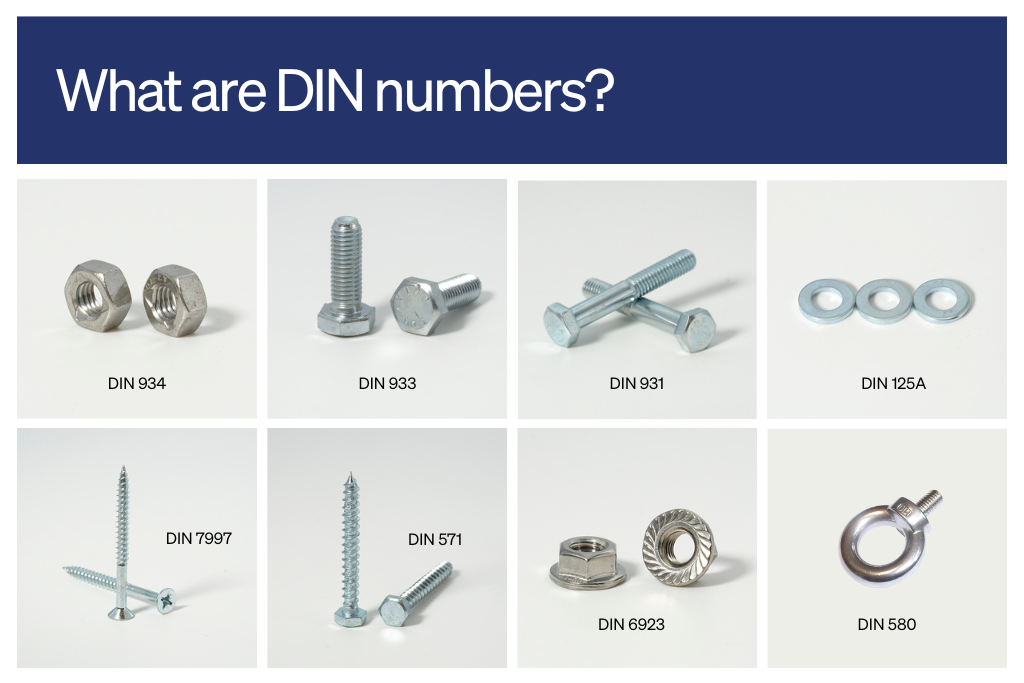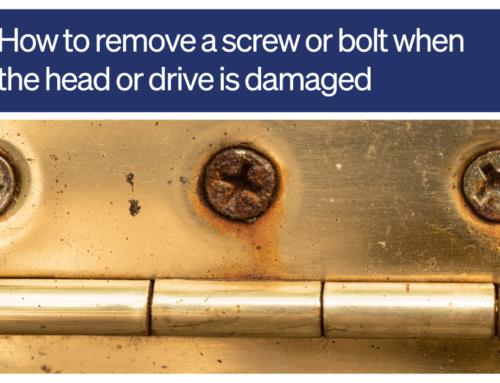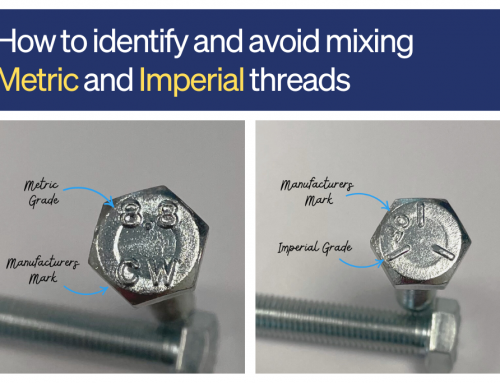In the context of fastenings (like bolts, screws, nuts, and washers), the DIN number refers to a standard set by the Deutsches Institut für Normung (DIN) – the German Institute for Standardisation. Each DIN number corresponds to a specific type of fastener, defining its dimensions, tolerances, material grades, thread types, and sometimes even surface finishes.
✅ What a DIN number tells you:
For example:
DIN 933 = A full-thread hex bolt with a metric thread.
DIN 934 = A hex nut.
DIN 125 = A flat washer.
🔧 Why it’s important to know the correct DIN number for the job:
1. Standardisation = Compatibility
DIN numbers ensure the part you’re using will fit properly with others — especially important in engineering, manufacturing, and construction, where millimeters matter.
2. Material and Strength
Some DIN standards specify material grades and tensile strength. This is crucial in safety-critical applications (e.g. aerospace, automotive, structural engineering).
3. Replacing or Reordering Parts
If a machine or structure needs a replacement, knowing the DIN number allows for accurate, consistent reordering – even from different suppliers.
4. Legal and Industry Compliance
Some industries or countries require specific standards to be met. DIN numbers help prove that the correct spec is being used.
🧠 Tip:
DIN numbers are now often replaced or cross-referenced by ISO (International) or EN (European) standards, but many people still refer to the DIN versions out of habit or convenience. For example:
DIN 933 = ISO 4017 (but check the specs – they may differ slightly)
Here’s a handy DIN to ISO conversion chart for some of the most commonly used fasteners in the industry. This can help you understand which modern ISO standard replaces or corresponds to an older DIN standard.
Common DIN to ISO Conversion Chart for Fasteners
|
Fastener Type
|
DIN Standard | ISO Equivalent |
Notes |
|---|---|---|---|
| Hex head bolt (full thread) | DIN 933 | ISO 4017 | Very similar, but thread length may differ in larger sizes |
| Hex head bolt (part thread) | DIN 931 | ISO 4014 | Often interchanged; double-check thread length |
| Hex nut | DIN 934 | ISO 4032 | Nearly identical; ISO has tighter tolerances in some sizes |
| Flat washer (narrow) | DIN 125-A | ISO 7089 | Commonly used with bolts and nuts |
| Flat washer (wide) | DIN 9021 | ISO 7093-1 | Often used for softer materials |
| Socket head cap screw | DIN 912 | ISO 4762 | Functionally interchangeable in most applications |
| Countersunk head screw | DIN 7991 | ISO 10642 | ISO version may differ in head height slightly |
| Hexagon socket set screw (flat point) | DIN 913 | ISO 4026 | Thread length and head shape can differ slightly |
| Hexagon socket set screw (cone point) | DIN 914 | ISO 4027 | |
| Spring washer | DIN 127 | ISO 8752 / No exact ISO | Often replaced by other types; use with care depending on load case |
| Slotted spring pin | DIN 1481 | ISO 8752 | |
| Threaded rod | DIN 975 | ISO 898-1 / ISO 3506 | Material grade is critical here |
⚠️ Important Notes:
- While many DIN and ISO standards are functionally interchangeable, dimensions, tolerances, or thread lengths may vary slightly.
- Always check technical datasheets if you’re working in tight tolerance or safety-critical environments.





